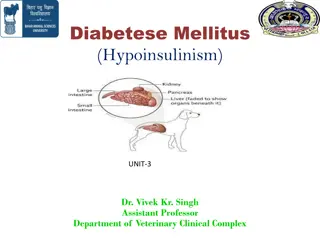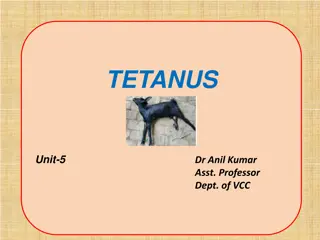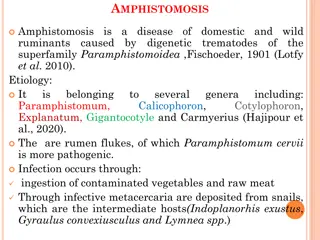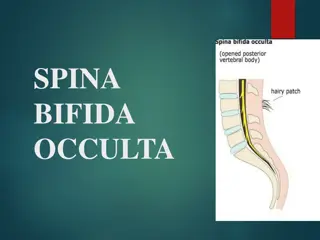Understanding Genu Valgum: Causes, Symptoms, Diagnosis, and Treatment
Genu valgum, also known as knock knees, is characterized by inward angulation of the legs at the knee joint. This condition can arise from various factors such as rickets, growth imbalances, muscle weakness, injuries, and more. Symptoms include visual separation of the ankles, altered gait, and potential pain and stiffness. Diagnosis involves physical examination and imaging tests like X-rays. Treatment approaches include orthosis, corrective osteotomy, and physiotherapy for strengthening and mobility. Understanding the causes, symptoms, diagnosis, and treatment options for genu valgum is essential for effective management.
Download Presentation

Please find below an Image/Link to download the presentation.
The content on the website is provided AS IS for your information and personal use only. It may not be sold, licensed, or shared on other websites without obtaining consent from the author. Download presentation by click this link. If you encounter any issues during the download, it is possible that the publisher has removed the file from their server.
E N D
Presentation Transcript
DEFINITION Inward or medial angulation of leg over thigh at the knee joint is termed as genu valgum or knock knee. In this, condition, a line drawn from the head of the femur to the middle of the ankle joint passes lateral to the knee joint instead of passing through the center of the knee.
CAUSES It could be because of: Rickets, producing curvatures in the femur or tibia. Growth imbalance between the medial and lateral femoral condyles. Rapid overgrowth of medial condyle leads to knock knee. Muscular or ligamentous weakness at adolescent stage. Muscular paralysis of semimembranosus, semitendinosus. Fracture and injuries involving the knee joint. Secondary to coxa vara, flat foot, OA knees or spinal curvatures. Obesity Deficiency of vitamin D and calcium
CLINICAL FEATURES Symptoms of genu valgum include an obvious visual separation of the ankles when the knees are together. The individual s gait is also likely to be affected as they compensate for the lack of gap between their knees. The altered gait may cause additional symptoms, such as; knee pain a limp when walking pain in feet, hips, and ankles stiff joints lack of balance when standing
DIAGNOSIS The diagnosis is done through: Physical examination of knee : The knee is evaluated for the degree of deformity in the weight bearing position. Intramalleolar distance is noted which could vary from 2 inches to 20 inches. The angle of genu valgum is measured with a goniometer or using weight bearing X-Rays. X-Ray MRI
TREATMENT The treatment is directed towards the causative factor. Specially designed orthosis with lateral uprights and a broad knee strap to pull the knee joint laterally is given. The patients are treated by corrective osteotomy. PHYSIOTHERAPEUTIC MANAGEMENT Cases treated conservatively: Correct method of applying orthosis, weight transfers and proper ambulation is taught. Following surgery Graded knee mobilization constitutes the major part of physiotherapy. Knee mobilization should be initiated in a small range as relaxed free movement, progressing gradually. Thermotherapy adjunct should be used as a pain controlling measure. Strengthening exercises for the quadriceps, hamstrings and glutei should be instituted.

























